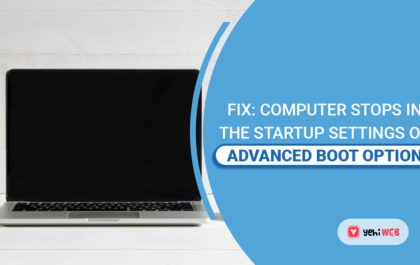In the fast-paced world of digital marketing, where every click can either spell success or sink your budget, understanding the true value of your pay-per-click (PPC) campaigns is paramount. Imagine investing in a golden ticket that promises to usher in waves of potential customers, yet leaves you questioning its worth. Just as an artist must examine their canvas for hidden flaws before unveiling their masterpiece, marketers need to dissect their PPC strategies to measure and maximize return on investment (ROI).
As businesses compete fiercely for attention in crowded online spaces, deciphering the metrics behind PPC ROI can be daunting yet rewarding. This article will guide you through the intricate web of tracking effectiveness—transforming seemingly abstract numbers into clear insights and actionable strategies. Whether you’re a seasoned pro or new to the game, understanding how to quantify your returns will empower you not only to justify expenditures but also to optimize future campaigns for greater impact. Buckle up as we unravel the mysteries behind measuring your PPC success!
How to Calculate PPC ROI
Calculating your PPC ROI is not just about tallying costs and revenue; it involves a deeper analysis of the metrics that matter most to your business goals. Begin by determining your total investment, which includes ad spend, management fees, and any associated costs like landing page development. To fully capture return on investment, you should factor in the lifetime value (LTV) of customers acquired through PPC campaigns. For instance, if you generate $500 in revenue from a customer who might return multiple times, that initial sale is merely part of their overall contribution.
Next, consider using advanced tracking methods to dissect campaign performance further. Tools such as Google Analytics or conversion tracking pixels allow you to attribute specific conversions directly to individual ads or keywords. This granularity helps identify not only which campaigns yield high immediate returns but also those that contribute positively over time—even if short-term ROI appears lackluster initially.
Remember, robust analysis requires consistent monitoring and flexibility to adapt strategies based on what the numbers reveal. Testing different creative elements or targeting options can lead to unexpected insights into audience behavior and preferences—ultimately driving more profitable decisions down the line. Always aim for a holistic understanding of your PPC effectiveness rather than just quick-win calculations focused solely on immediate revenues!

Factors Affecting PPC ROI
Several factors can significantly impact the return on investment (ROI) of your pay-per-click (PPC) campaigns, often revolving around ad relevance and landing page experience. A well-crafted ad that resonates with the target audience not only drives clicks but also sets realistic expectations for conversion rates. This synergy between ad copy and user intent is crucial; if users feel misled after clicking through, bounce rates will spike, ultimately diminishing ROI.
Additionally, the meticulous selection of keywords plays a pivotal role in driving targeted traffic that converts. Long-tail keywords may have lower search volumes but often yield higher conversion rates due to their specificity and alignment with user intent. Competitive analysis can help identify gaps in keyword strategies, enabling you to discover lucrative areas where competition might be less fierce while still attracting quality leads. Finally, continuous monitoring and optimization—such as adjusting bids based on performance or experimenting with different ad formats—can ensure your PPC efforts remain agile and more responsive to shifting market conditions, thereby maximizing returns over time.
Tools for Measuring PPC Performance
When it comes to measuring PPC performance, utilizing the right tools is crucial for unlocking data-driven insights. Platforms like Google Ads and Microsoft Advertising provide built-in analytics that offer a wealth of information about click-through rates (CTR), conversion rates, and cost per acquisition (CPA). However, integrating third-party tools such as SEMrush or WordStream can elevate your analysis by providing competitive insights and comprehensive keyword tracking. These tools enable you to benchmark your metrics against industry standards, ensuring your campaigns are not only effective but also competitive.
Additionally, leveraging Google Analytics alongside PPC analytics creates a holistic view of user behavior post-click. This integration helps you understand how visitors interact with your site after they’ve clicked on an ad—key factors that directly influence overall ROI. Beyond traditional metrics, consider employing attribution modeling tools like HubSpot or Clicktale to analyze customer journeys more effectively. By identifying which touchpoints contribute most significantly to conversions, you can fine-tune bidding strategies and budget allocation to maximize returns from each campaign element. Embracing this multifaceted approach ensures you’re not just measuring performance; you’re evolving with it for sustainable growth in PPC success.

Common Mistakes in PPC Measurement
One of the most common mistakes in PPC measurement is relying solely on last-click attribution. This approach gives all the credit for a conversion to the final ad a customer interacted with before making a purchase, neglecting the various touchpoints that led them there. By overlooking these earlier interactions, marketers miss out on understanding the full customer journey and how different ads contribute to conversion paths. Embracing multi-touch attribution models can provide a more holistic view, revealing which campaigns or keywords played pivotal roles throughout the buyer’s journey.
Another pitfall is failing to segment data appropriately. Treating all clicks and conversions as uniform can obscure valuable insights that might emerge when diving into finer details such as device usage, demographic information, or time-of-day performance. By segmenting your data, you could uncover trends and patterns that inform budget allocation or creative adjustments—essential shifts that drive better ROI. Additionally, it’s vital not to overlook ancillary metrics like engagement rates and bounce rates; these factors often foreshadow longer-term success but are frequently cast aside in favor of immediate financial metrics alone.
Strategies to Improve PPC ROI
One of the most effective strategies to improve PPC ROI is to refine your keyword targeting through a blend of broad and long-tail keywords. While broad keywords can capture a wider audience, long-tail variations often lead to higher conversion rates due to their specificity. Regularly auditing keyword performance helps you identify underperforming terms that may drain your budget, allowing you to shift resources toward those that yield higher returns or better engagement rates.
Additionally, incorporating ad extensions can significantly enhance your PPC campaigns without incurring extra costs. By providing additional information—such as location, phone numbers, or links to specific pages—you increase visibility and CTR (click-through rate), effectively driving more qualified traffic at a lower average CPC (cost per click). Finally, consider leveraging data analytics tools for A/B testing different ad creatives and landing pages. These insights help pinpoint what resonates best with your audience while optimizing the customer journey, ultimately leading to improved conversions and an enviable ROI on your advertising spend.

Conclusion
In conclusion, understanding and effectively measuring your PPC ROI is not just about tracking numbers; it’s about crafting a narrative that informs your future strategies. By delving deeper into performance metrics—beyond mere clicks and conversions—you can uncover valuable insights into customer behavior, seasonal trends, and competitive positioning. This approach allows marketers to make data-driven decisions that enhance campaign efficiency and drive long-term profitability.
Moreover, embracing advanced analytics tools can elevate your understanding of PPC ROI further. Utilizing AI-powered solutions enables real-time adjustments to campaigns based on predictive insights, ultimately maximizing returns while minimizing wasted ad spend. As the digital landscape continues to evolve, staying ahead means continuously refining your measurement frameworks—and viewing each campaign as an opportunity for learning rather than just a point of financial calculation. Your journey in PPC isn’t merely a path for revenue generation; it’s also a powerful tool for building stronger connections with your audience.
Mia Roberts
Related posts
New Articles
Purpose of a Business Pitch Deck
In the high-stakes world of startups and entrepreneurial ventures, a great idea alone isn’t enough to secure funding or support….


